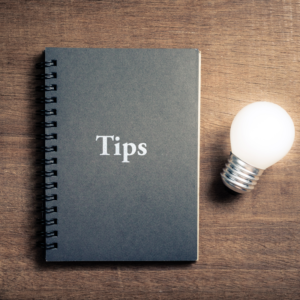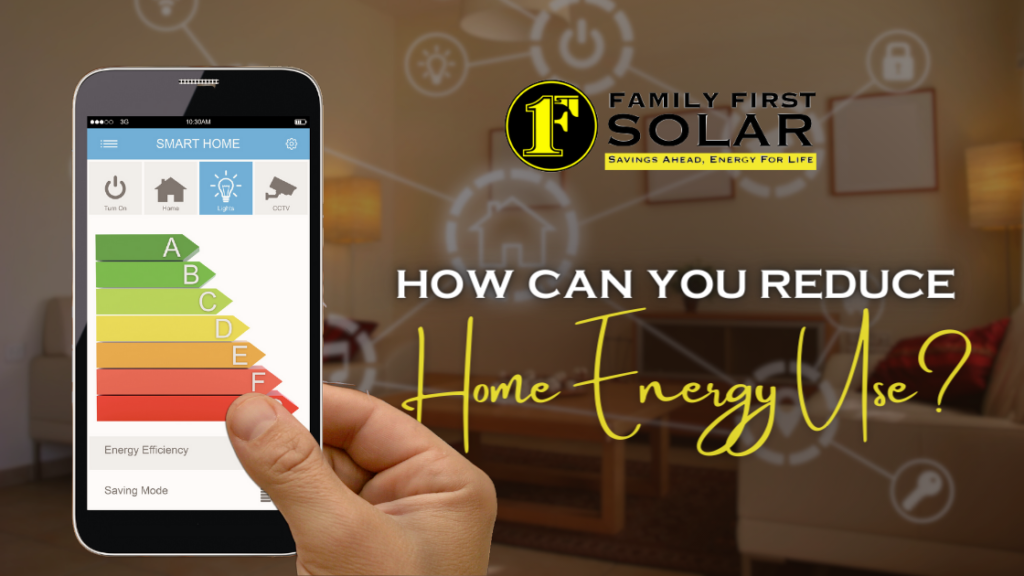How Can You Reduce Home Energy Use?
Do high energy bills have you sweating? Your household is already feeling the intensity of the 24% price increase since January 2022. And, you’ve likely already heard that it will only get worse when HECO rolls out its peak hours pricing. Consumers will pay triple the regular rate during the “evening hours” of 5 pm – 9 pm and twice the standard rate overnight, from 9 pm – 9 am.
While you can’t control the cost of energy, there are many things you can do to save energy and make your home more energy efficient so that your electricity bill doesn’t hit quite so hard. Here’s our list of the top ways to save energy and save money.
What Causes High Power Consumption in the Home?
 Many of us spend little time thinking about what our energy bill is actually covering. We use our appliances as needed and don’t think too much about it. But when you break down what’s causing high energy consumption in the home, you’re empowered to make some changes.
Many of us spend little time thinking about what our energy bill is actually covering. We use our appliances as needed and don’t think too much about it. But when you break down what’s causing high energy consumption in the home, you’re empowered to make some changes.The number of people living in your home and how much time each person spends at home affects your household energy usage. If you have six people in your home and three of them work from home, you’re using way more energy than the single person living in a one-bedroom apartment.
What appliances use the most kWh in a home?
Aside from usage based on the number of people in your home and their lifestyle, certain appliances use more energy than others. We measure that usage in kWh, or kilowatt-hours. Here are the biggest energy users in an average household.
-
- Cooling & Heating: 47% of your energy bill
-
- Water heater: 14% of your energy bill
-
- Washer and dryer: 13% of your energy bill
-
- Lights: 12% of your energy bill
-
- Refrigerator: 4% of your energy bill
-
- Electric oven: 3-4% of your energy bill
-
- TV, DVD, cable box: 3% of your energy bill
-
- Dishwasher: 2% of your energy bill
-
- Computer: 1% of your energy bill
Home Improvement Tips to Reduce Energy Use
 After taking a look at that list, you may already have ideas about how you can reduce energy consumption and save money. We’ll share with you some of our top tips here.
After taking a look at that list, you may already have ideas about how you can reduce energy consumption and save money. We’ll share with you some of our top tips here.
Install a programmable or smart thermostat
Smart thermostats are an easy way to reduce heating and cooling costs and reduce your carbon footprint. Smart thermostats often have a feature called “Eco Mode” or something similar, no matter what brand you have.
These energy-saving modes automatically adjust the temperature a few degrees, saving you money. Another feature many smart thermostats have is the ability to know when you are away or at home based on its connection to the user’s phone. This way, it can start cooling down the home once you arrive instead of keeping it at peak coolness all day.
If a smart thermostat isn’t in the budget right now, that’s okay! Even many older thermostats are programmable, so you can set temperatures for certain times of day, reducing the human error of forgetting to change the thermostat before you leave for the day.
Since cooling (and heating if you don’t live in Hawai’i like us!) takes up 43% of energy consumption, anything you can do to reduce your use helps lower your heating and cooling bills.
Install ceiling fans
Speaking of air conditioning use, because of our warm, mild temperatures in most places on the islands, some homes don’t even have traditional air conditioning. In many places, it’s entirely possible to keep your home at a comfortable temperature by leaving windows open and using a whole house fan and ceiling fans to keep air moving through the house.
If your home has AC, there’s nothing wrong with using it! But if you want to use less energy, try only using it when you really need to. Install ceiling fans and allow the natural breeze of the islands to cool your home whenever possible.
Weatherize your home
Weatherizing your home is a great tip for homes on the mainland that experience cold temperatures in the winter. But, that does mean that Hawaiians can’t benefit from weatherizing too. Even simple things like caulk around the windows and weather strips on doors do wonders to keep cold air in your home.
And on those those occasions when it does get chilly enough to heat your home, weatherizing helps prevent heat loss as well. These easy tips truly do help you conserve energy.
Clean or replace your air filters
If you have an air conditioner, make sure you’re replacing your air filter every three months. If your air filter gets too much dust and debris on it, your air conditioner has to work harder to produce the same amount of cold air.
Set a reminder on your phone to replace the filter once a quarter. Or if you have a smart thermostat, it will probably remind you to do it!
Install better windows
High-quality windows are key to keeping a home at a reasonable temperature, avoiding heat loss and losing cool air. Typically, older windows won’t have energy-efficient frames, and your they may even have single-pane glass. Double or triple-paned windows are much more energy efficient. And nowadays, fiberglass, composite, and vinyl window frames ensure the home is properly sealed—much better than metal or wood frames.
Upgrading your windows—while certainly has an upfront expense—can save you money over time because they do such a better job of regulating the temperature of your home.
Replace your light bulbs
Switching to energy efficient lightbulbs is one of the easiest things you can do to use less power. Yes, when you go to the hardware store to buy new lightbulbs, the LED bulbs have a higher price tag.
But consider this. According to GE, an LED light lasts three times as long as CFL bulbs or incandescent bulbs. Plus, they use less energy over their lifespan, saving you money on your electric bill too.
Look for the Energy Star label when purchasing lightbulbs to make sure you’re getting energy efficient products.
Beware of phantom energy loss
While this type of energy loss isn’t the top energy sucker in your home, it’s certainly something to be aware of. This term refers to the energy used by items plugged in at your home that are using energy, even when the item itself is not in use. Everything from the clock on your microwave to your plugged-in electric toothbrush use energy all the time.
Gaming consoles and cable boxes are the biggest offenders of using phantom energy. Consider using a power strip so you can switch off your systems without unplugging them. Also, some gaming systems have an energy-saving mode that can significantly reduce the amount of energy that item uses.
Consider Purchasing Energy-Efficient Appliances
 When we look back at our list of the highest energy users in the home, most of those items are your major appliances. Energy Star is the US Environmental Protection Agency’s backed symbol for knowing that an item has been certified as energy efficient. Look for the Energy Star symbols as you’re shopping for appliances.
When we look back at our list of the highest energy users in the home, most of those items are your major appliances. Energy Star is the US Environmental Protection Agency’s backed symbol for knowing that an item has been certified as energy efficient. Look for the Energy Star symbols as you’re shopping for appliances.
Refrigerator
Refrigerators take up 4% of your electric bill, so switching to a more efficient model makes a big impact. The high-efficiency compressors create less heat and require less energy to run. Plus, energy efficient models have better insulation, so they can keep your food cold while using less electricity.
Washer/Dryer
Your washer and dryer are a major energy suck, using 13% of your household energy use. Energy Star models use 25% less power and 45% less water. The washers can spin faster than traditional models, so they wring more water out at the end of the cycle, making the drying process faster.
Electric Oven
Gas ovens are more energy efficient than electric ovens, but if you don’t have gas in your kitchen—electric it is! Look for an oven with convection functionality, and then use it! You’ll use about 20% less energy, and be able to cook your foods faster and at a lower temperature.
Dishwasher
Today’s dishwasher models are incredible energy efficient, making them far more efficient than hand-washing dishes. Just by updating your dishwasher from an older model can help in saving energy and money. Many new dishwashers have an additional eco mode which is the most eco-friendly setting. Give it a try, and you’ll probably find your dishes are just as clean with less energy consumed.
TV and Cable Box
The TV and cable box are prime places for that phantom energy use we discussed earlier. Look for Energy Star labels when purchasing a new TV to save an average of 25% energy usage. Efficient TVs have features that make the TV power down or go into idle mode if they get left on on accident.
As for the cable box, DVR, or DVD player, consider if you’re actually using it enough to justify keeping it plugged in by your TV. With so many streaming services, many people rarely use their DVR and DVD player anymore. Consider unplugging them and only pulling them out if you need them. Or, install power strips so you can switch them on and off.
Find Out What Solar Panels Cost in Hawaii in 2023
Of course, taking advantage of renewable energy and turning to solar energy takes care of high energy bills for you. Taking all of these energy saving measures is great for reducing your carbon footprint and saving money, but switching to solar power will make the biggest impact on your energy bill.
At Family First Solar, our customers consistently save 30% on the current solar bill when switching to solar power. Essentially, their solar loan payment is 30% less than their previous energy bill—which they don’t have anymore because they’re powering their home with solar power!
To learn all about how you can start saving money with solar, call Family First Solar at (808) 724-4072 today!


